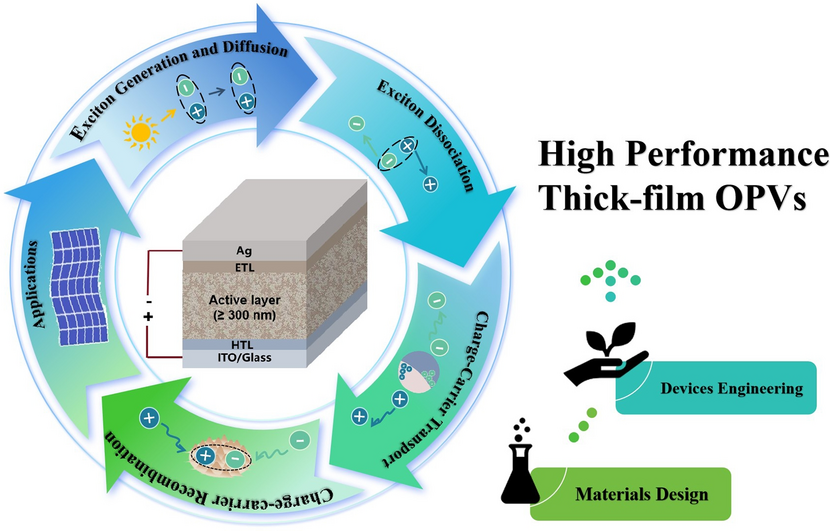Optimizing Exciton and Charge-Carrier Behavior in Thick-Film Organic Photovoltaics: A Comprehensive Review

As the demand for renewable energy grows, the limitations of traditional silicon-based solar cells in terms of cost, flexibility, and manufacturing scalability become more pronounced. Now, researchers from Hangzhou Normal University and Zhejiang University, led by Professor Lingling Zhan, Professor Shouchun Yin, and Professor Hongzheng Chen, have presented a comprehensive review on thick-film organic photovoltaics (OPVs) and their potential for next-generation solar technology. This work offers valuable insights into the development of high-efficiency, scalable, and cost-effective solar cells.
Why Thick-Film OPVs Matter
- Industrial Scalability: Thick-film OPVs (>300 nm) are crucial for large-area manufacturing, offering higher tolerance to processing variations compared to thin-film counterparts.
- Enhanced Light Absorption: Thicker active layers improve photon harvesting, especially in the near-infrared region, boosting photocurrent generation.
- Mechanical Robustness: Thick films provide better mechanical stability, making them ideal for flexible and wearable solar applications.
However, increasing the active layer thickness introduces challenges such as exciton recombination, charge transport inefficiencies, and morphological instability.
Innovative Design and Features
- Exciton Management: The review covers strategies to extend exciton diffusion lengths, including molecular design of non-fullerene acceptors, use of fluorinated additives, and control of molecular packing.
- Charge-Carrier Transport: Emphasis is placed on enhancing and balancing electron and hole mobilities through molecular planarity, crystallinity optimization, and vertical phase separation.
- Recombination Suppression: Techniques such as side-chain engineering, solvent additives, and polymer molecular weight control are discussed to reduce trap-assisted recombination and improve charge extraction.
Applications and Future Outlook
- High Efficiency: Recent advances have enabled thick-film OPVs to achieve over 19% efficiency, with some systems maintaining high performance at active layer thicknesses exceeding 500 nm.
- Stability Improvements: Strategies like entropy-driven stabilization and crystallization sequence control have resulted in devices retaining over 80–90% of initial efficiency after 1,000 hours of thermal aging.
- Cost Reduction: Use of low-cost polymer donors (e.g., PTQ10, TVT-based materials) and reduced material usage in thick-film devices significantly lower manufacturing costs.
- Machine Learning Integration: AI-driven models are increasingly used to predict optimal material combinations and device architectures, accelerating the discovery of thickness-tolerant OPV systems.
This comprehensive review establishes guidelines for designing high-performance thick-film OPVs, bridging the gap between laboratory achievements and industrial manufacturing. It highlights the importance of interdisciplinary research in materials science, device engineering, and artificial intelligence to drive innovation in organic solar technology.
Stay tuned for more groundbreaking work from Professor Lingling Zhan, Professor Shouchun Yin, and Professor Hongzheng Chen at Hangzhou Normal University and Zhejiang University!
Follow the Topic
-
Nano-Micro Letters

Nano-Micro Letters is a peer-reviewed, international, interdisciplinary and open-access journal that focus on science, experiments, engineering, technologies and applications of nano- or microscale structure and system in physics, chemistry, biology, material science, and pharmacy.






Please sign in or register for FREE
If you are a registered user on Research Communities by Springer Nature, please sign in